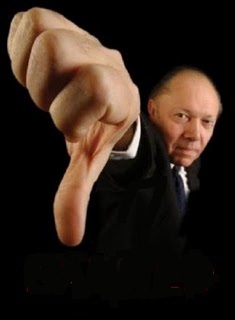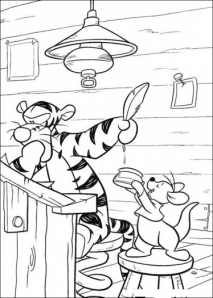 Recently I’ve been asked by several author/bloggers to submit a guest post about creativity. At first I balked because when it come to creativity I feel like a gnu among gazelles. I “hang out” with a lot of novelists but I am a non-fiction writer. I’ve tried writing novels – three of them – they all made the rounds of agents without a nibble. I write well, so I assumed I’m just not creative enough.
Recently I’ve been asked by several author/bloggers to submit a guest post about creativity. At first I balked because when it come to creativity I feel like a gnu among gazelles. I “hang out” with a lot of novelists but I am a non-fiction writer. I’ve tried writing novels – three of them – they all made the rounds of agents without a nibble. I write well, so I assumed I’m just not creative enough.
But a few people have been kind enough to help me change my mind (a little) on that. OK, I’m not a novelist, but I’ve always tried to keep my non-fiction from being dry and boring. My latest book has received some great reviews, I was awarded the Versatile Blogger Award, the One Lovely Blog award and Mitchell Allen (one of the most creative bloggers I know) once told me, “You could make a trip to the Post Office entertaining”. So I hot-glued some flashing Christmas tree lights to a colander, slipped it onto my head as a thinking cap and set to work.
First up was Stuart Nager, AKA The Born Storyteller. I met Stuart on Twitter and we became friends and co-conspirators when we ended up huddled around the same bonfire on Triberr. You can read my Guest Post, Creativity and Inspiration on his web site. Also be sure to drop by his blog, Tale Spinning, to read his excellent short stories. Stuart is, among other things, a Professional Storyteller; NYS Certified Drama Teacher, and Drama Coach.
Next was Sirius Press, Inc.’s Creative Flux blog.
 Terre is co-author of The Four Orders, a four-book Sci-Fi/Thriller series that begins with life-altering discoveries and builds momentum towards our society’s self-actualization. Terre is a Graphic Designer and Illustrator and has recently moved into the fields of Video and Motion Graphics. She holds a degree in History in Art with a minor in English and is a published Art Reviewer. We’ve been communication compadre’s for some time now as we help one another promote our books.
Terre is co-author of The Four Orders, a four-book Sci-Fi/Thriller series that begins with life-altering discoveries and builds momentum towards our society’s self-actualization. Terre is a Graphic Designer and Illustrator and has recently moved into the fields of Video and Motion Graphics. She holds a degree in History in Art with a minor in English and is a published Art Reviewer. We’ve been communication compadre’s for some time now as we help one another promote our books.
Please pop over and read Training Creativity; it’s a short post and I think you’ll find it entertaining.
I wrote the Mechanics of Creativity as a guest post for another blogger who invited me to guest, then dropped off the face of the Earth and hasn’t been heard from since. So I posted it here in order to keep it in the same timeline as the rest. This article is an analysis of how I came up with Training Creativity.

 First person is a very common voice for writers to use in fiction, especially in mysteries and crime thrillers; this voice allows the reader to discover the plot as it unfolds through the protagonists eyes.
First person is a very common voice for writers to use in fiction, especially in mysteries and crime thrillers; this voice allows the reader to discover the plot as it unfolds through the protagonists eyes. What is the creative process?
What is the creative process? In this article I’m not going to try to tell you how to build up your creative muscle, I’m going to do an analytical breakdown of the creative process I went through to write my last blog post. I’ll preface it by saying that this is not the process I use all the time: sometimes an article just springs into my mind, fully written, my only task is to record it before the words fade from my mind. Often these Inspired Writings occur at the most inopportune times: like 3:00 am. If I am able to ignore the call and go back to sleep I’ll remember that I had a wonderful idea, but won’t remember anything more about it. Opportunity lost!
In this article I’m not going to try to tell you how to build up your creative muscle, I’m going to do an analytical breakdown of the creative process I went through to write my last blog post. I’ll preface it by saying that this is not the process I use all the time: sometimes an article just springs into my mind, fully written, my only task is to record it before the words fade from my mind. Often these Inspired Writings occur at the most inopportune times: like 3:00 am. If I am able to ignore the call and go back to sleep I’ll remember that I had a wonderful idea, but won’t remember anything more about it. Opportunity lost!  Recently I’ve been asked by several author/bloggers to submit a guest post about creativity. At first I balked because when it come to creativity I feel like a gnu among gazelles. I “hang out” with a lot of novelists but I am a non-fiction writer. I’ve tried writing novels – three of them – they all made the rounds of agents without a nibble. I write well, so I assumed I’m just not creative enough.
Recently I’ve been asked by several author/bloggers to submit a guest post about creativity. At first I balked because when it come to creativity I feel like a gnu among gazelles. I “hang out” with a lot of novelists but I am a non-fiction writer. I’ve tried writing novels – three of them – they all made the rounds of agents without a nibble. I write well, so I assumed I’m just not creative enough. Terre is co-author of
Terre is co-author of